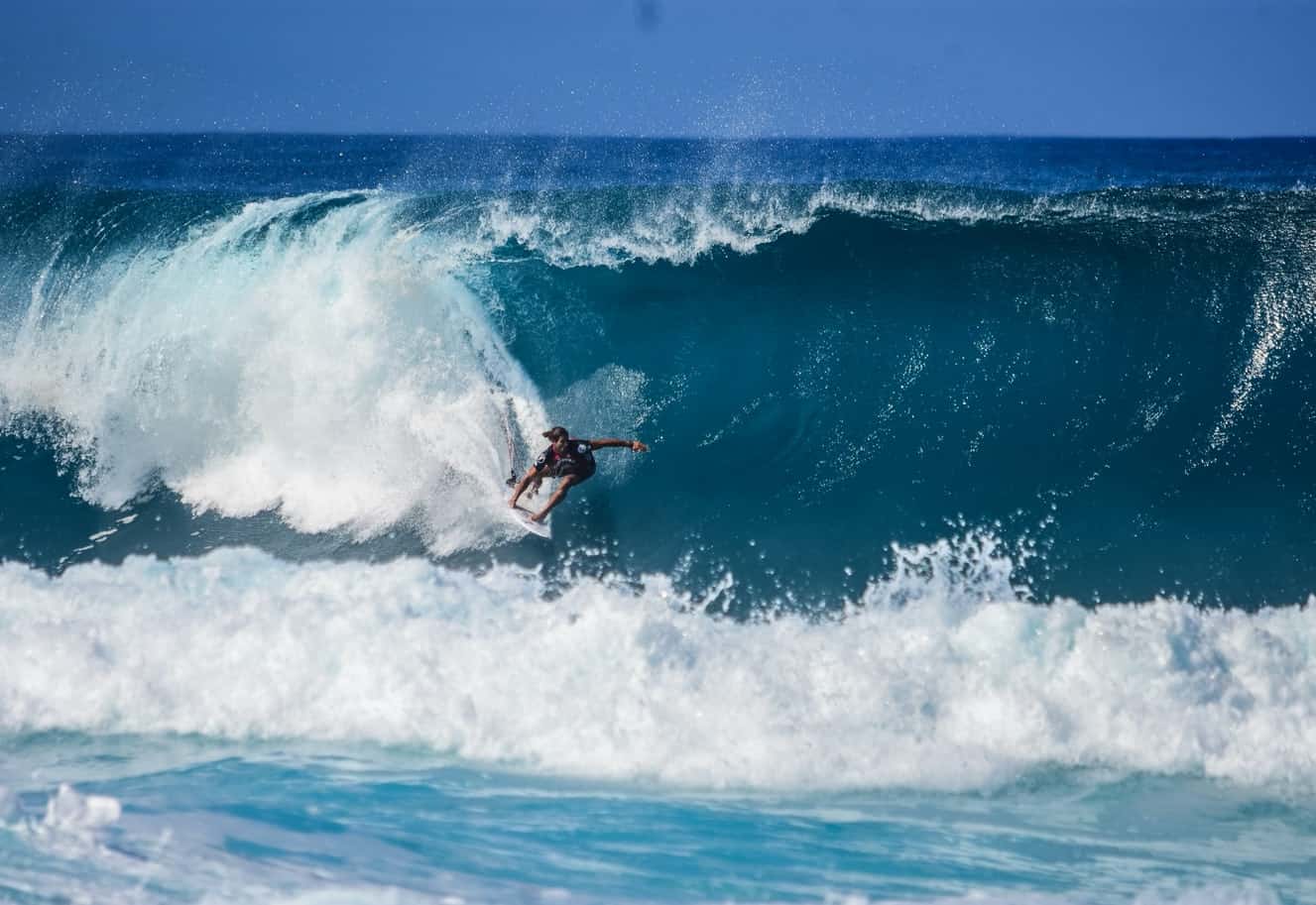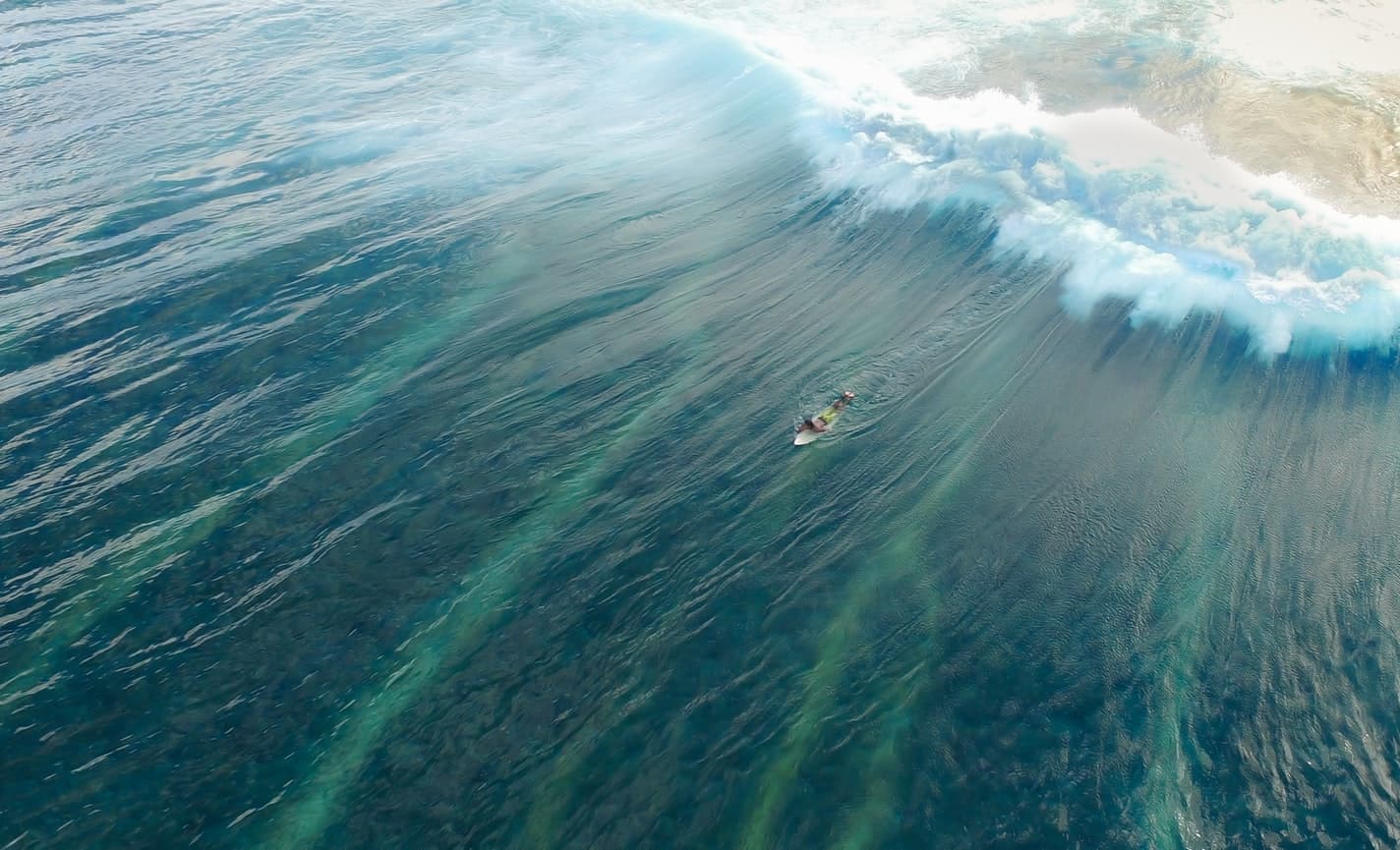Think of all the things you do on a surfboard. When the waves are firing, you can ride one after the other. From intense paddling to doing a pop up and waiting until the surfboard’s nose gets caught in the wave current, surfers are always active on the board.
Can you surf without wax? You can but it is extremely difficult to surf on an unwaxed surfboard. Surfboard wax gives you the grip and traction you need and prevents you from sliding off the board when paddling.
Slipping off a surfboard is no fun. Applying it is a fairly easy and quick thing to do, and surf wax isn’t very expensive. Some surfboards don’t require wax while others need it. You’re just asking for a bad time if you try to surf on an unwaxed board.
How Does Surfboard Wax Work?
Surfboard wax isn’t like car wax. You can feel how smooth a car body is after waxing it. , almost slippery. Surfboard wax has the opposite effect. It makes the surface of the surfboard sticky and helps prevent friction.
Wax makes it much easier to paddle whiteout skipping off the board. Whether you’re paddling or sitting on the surfboard, you’ll be able to remain in place when a current of water moves you in the water. Surfboard wax also gives you the grip you need when standing and getting ready to ride a wave.
When you’re caught by the wave riding it, the wax keeps you stuck on the board no matter how the wave behaves. If it’s rough, you can maintain your position without falling off. If it’s a gentler wave, you’ll be able to ride it longer.
Surfboard wax does much more than keep you attached to the board while surfing. Surfboards take a lot of abuse in the water. Surfboards collect sand particles and grime and take a beating when they’re banged on a hard surface.
Your wetsuit rubs against the board and the wax rubs off. The sun melts wax, and often surfboards are left out in the sun, which melts away the wax coat.

How Often Should I Wax My Surfboard?
How often you should wax your surfboard is up to you. However, when you start to slip off the board, then you’ll know that it’s time.
But you don’t want to wait until then. If you’re a serious surfer and go out to the ocean a lot, you can wax your board every day. Others wax their boards once a month.
The frequency with which you should wax your board also depends on the wax you’re using. There is wax designed for cold water and others that are formulated for warm weather.
If you wax the board too frequently, the wax will build up to where you’ll see a thick, grey top layer that will need to be removed.
There are two ways to answer how often you wax your board. One is you should wax it each time before traveling to a surfing destination away from home when you’ll be in the water often.
If you remain local and surf frequently during the season, you can apply a quick wax every morning before you go out.
How Many Coats Of Wax Are Applied To A Surfboard?
You should apply two coats to your surfboard each time you wax it. There is a base coat and a topcoat.
The basecoat should be coated with a thick wax designed for warm and tropical water and weather. On the topcoat, use wax designed for colder ocean waters.
Your basecoat wax is a harder wax for warmer weather. We use this thicker wax because it adheres better to the surfboard and beads up better. The topcoat is generally stickier and will stick easily to the hard basecoat wax.
Today wax “technology” has advanced in the last 20 years. We now have wax for specific ocean conditions. And it matters what kind of wax you apply.
For example, if the waters you surf in are warm and tropical, then your topcoat needs to be a wax designed for it. The same applies to cold water wax: if you surf in the Pacific Northwest with waters under 60 degrees in temperature, you should use a cold water wax.
The topcoat is exposed to different sea temperatures. Warm and tropical temperature water. The warmer the temperature, the faster the wax breaks down. Surfing in then tropics means you’ll need to wax your board more often. In the colder North Atlantic and Pacific Ocean waters, you won’t need to wax as much.
Wax designed for warm water temperatures is harder than for cold. The 4 types of wax you can use are
- Cold Water Surf Wax. Best when the water temperature is in the range between 50 and 59 degrees. Surfers in Washington State and Northern California use this type of wax to get the best performance form their surfboards.
- Cool Temperature Surf Wax. When you surf in waters between 57 and 67 degrees, in areas of the Pacific off the coast of Southern California (Los Angeles and San Diego), use a wax graded for this temperature range.
- Warm Water Surf Wax. This wax is designed for sea temperatures between 65 degrees and 75 degrees. The water temperature is in this range a lot in Southern California most of the year.
- Tropical Surf Wax. If you plan to surf in Hawaii, then this is the wax you’ll need. When the water is almost bath-like, 76 degrees, and higher, this wax will melt slower and keep you on the board longer.
You want to adhere to these designations; if the water gets too cold, the wrong wax will freeze on the surfboard, making it slippery. You’ll need to stop surfing and thaw out the board.
How Do I Apply Basecoat Wax To My Surfboard?
The first thing you must do is make sure there isn’t any old wax on the surfboard. If you put new basecoat wax on, it will not adhere to the surfboard.
Make sure the board is clean. Peel off and remove the old wax. Follow these helpful steps.
- First, soften to wax by putting your surfboard in the sun to help bake the old wax. Make sure the waxed side is exposed to the sunlight.
Try not to leave the surfboard out too long in the sun. The heat can ruin a surfboard and break down the structure of the board. Try using mineral spirits to loosen up the old wax.
- Use a comb or a straight edge such as the edge of a plastic card like a credit card. Scrape off the old wax.
- Note that when the old wax comes off, the surfboard surface will be sticky. Apply mineral spirit oil with a soft cloth to make the surface smooth again.
Now you’re ready to apply the basecoat. Rub it onto the board in small circles of horizontal or vertical lines. Or you can make a checkerboard pattern; first wax in one square, then move away to a distant square, then fill in a square nearby, then move further away, and so on. The checkerboard square can be 1 foot by 1 foot in size. When it’s filled in with wax, create another checkerboard on the other side of the surfboard.
Move back and forth and the board when you wax and make sure the area where you pop up and stand is waxed completely. Try not to miss any spots.
You won’t need to wax the nose area or the tail since these are not areas where your body makes contact.
One way to tell when you need to wax is to stand up on the board and rub your feet against it. But the best way is to set a specific time to re-coat the board with fresh wax. It can be once a month, once every 3 months, or every day you go out on the water.
Always remove old wax before applying the basecoat.
Related Questions
What Kinds Of Surfboard Do Not Need Wax?
Some surfboards are “soft top,” made of foam that doesn’t need to be waxed. You should never apply wax to foam anyway.
Foam boards are very durable, and they are light. They’re great for beginner surfers and are becoming popular and used by experienced surfers when they just want a no-hassle, casual day at the beach.
How Far Up Should I Wax My Surfboard?
Some professional surfers wax all the way up to the nose. This is because they move around on the surfboard, with one foot touching the nose or moving down to the tail, where they also will wax.
If your technique makes you move around the board, it cannot hurt to wax the entire surface. The experience you have out in the water will give you the answer. If you skip on any part of the board, make sure to wax it there.
What Kind Of Top Coat Wax Should I Use?
Just like choosing basecoat wax, the wax on top where your body and feet make contact, use a wax appropriate for the water temperature where you surf.
Topcoat wax is easy to apply, much more so than the basecoat wax.

